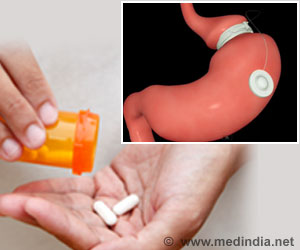Use of embolization procedure was found to lower the levels of hunger-stimulating hormone and thereby leading to significant weight loss, finds study.

"Weight loss is a major problem," said Nicholas Kipshidze, MD, PhD, who is with New York Cardiovascular Research, general director and physician in chief at Republican Hospital, Tbilisi, Georgia, and the study's lead investigator. "There are medications, but they have side effects. Bariatric surgery is well established, but it's a major surgery. This procedure may develop into a new, simple method for the treatment of obesity."
The procedure, called gastric artery chemical embolization (GACE), uses a catheter to introduce tiny beads into the left gastric artery. The beads cut off part of the blood supply to the upper part of the stomach, called the gastric fundus. This area of the stomach produces most of the body's supply of ghrelin, the hormone known to stimulate appetite.
This small study is the first in humans to use GACE for weight loss. Gastric artery embolization has been used for decades for other purposes, including treating hemorrhage in the upper gastrointestinal tract and reducing the side effects of chemotherapy for advanced liver cancer. Animal studies of GACE for obesity treatment have found that it leads to weight loss and decreased ghrelin levels in the blood.
"It's a one day surgery," Dr. Kipshidze said. "You can do the procedure on patients in the morning and send them home in the evening."
The study included just five people. All were obese; the average body mass index (BMI) was 42.3 kg/m2, with a range of 33.9 kg/m2 to 52.8 kg/m2. Researchers used an endoscope to examine each person's esophagus and stomach before and after the procedure, as well as one week later. No ulcers or other complications occurred. Three people had discomfort during the first few hours after the procedure, but the endoscopy did not show blockages or other complications.
Advertisement
Blood ghrelin levels also dropped. At one month, levels had fallen 29 percent from baseline (p<0.05). At three months, they were 36 percent below baseline (p<0.05). At six months, they were 18 percent below baseline (p>0.5).
Advertisement
Dr. Kipshidze and colleagues are planning a larger study in which patients are randomized to receive either GACE or a placebo procedure. They also are developing dedicated embolization techniques, catheters and materials.
Source-Eurekalert












